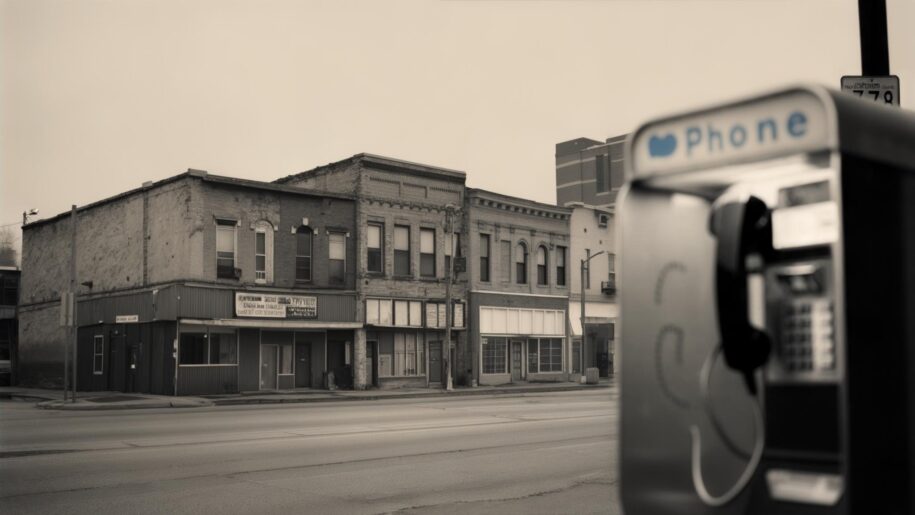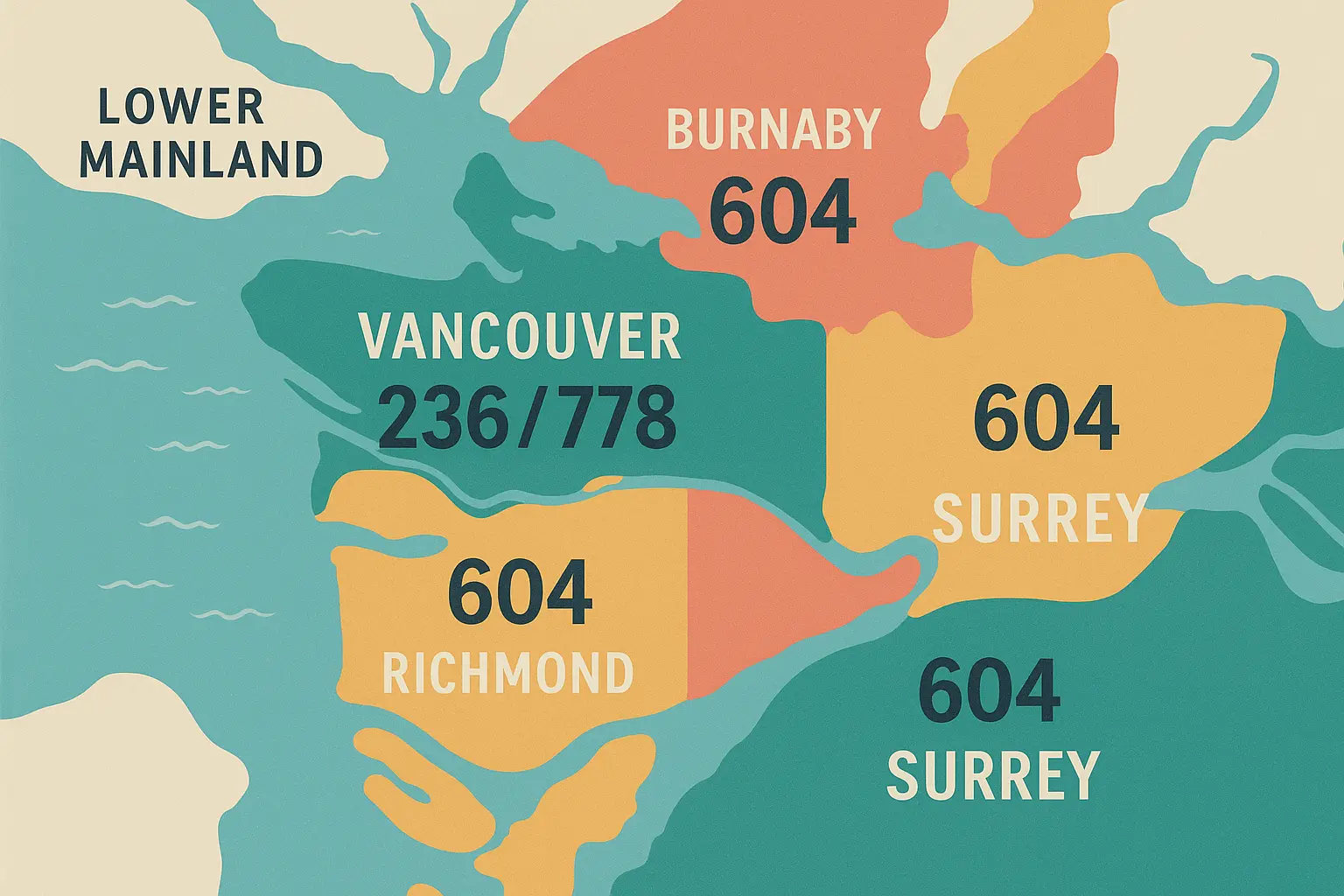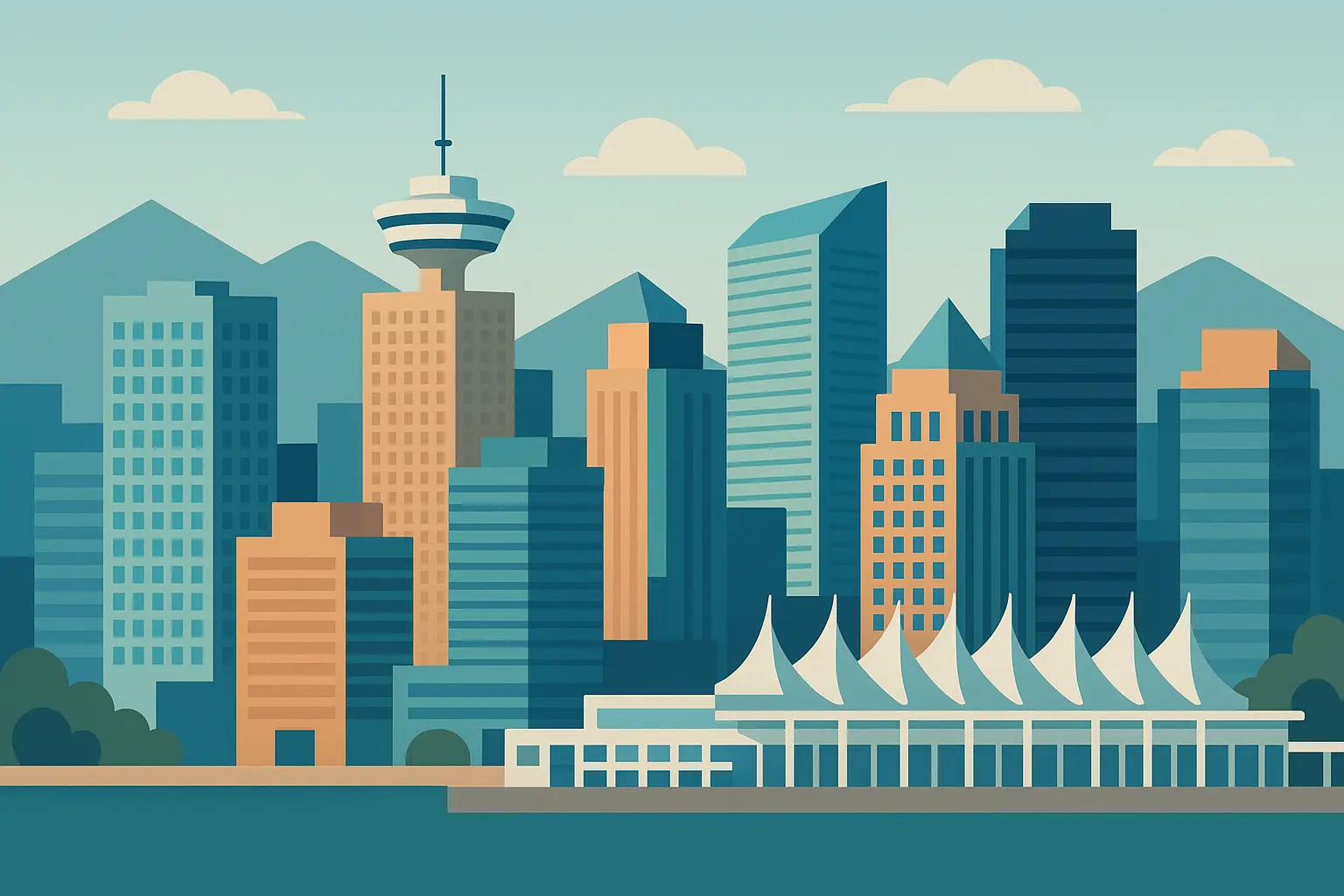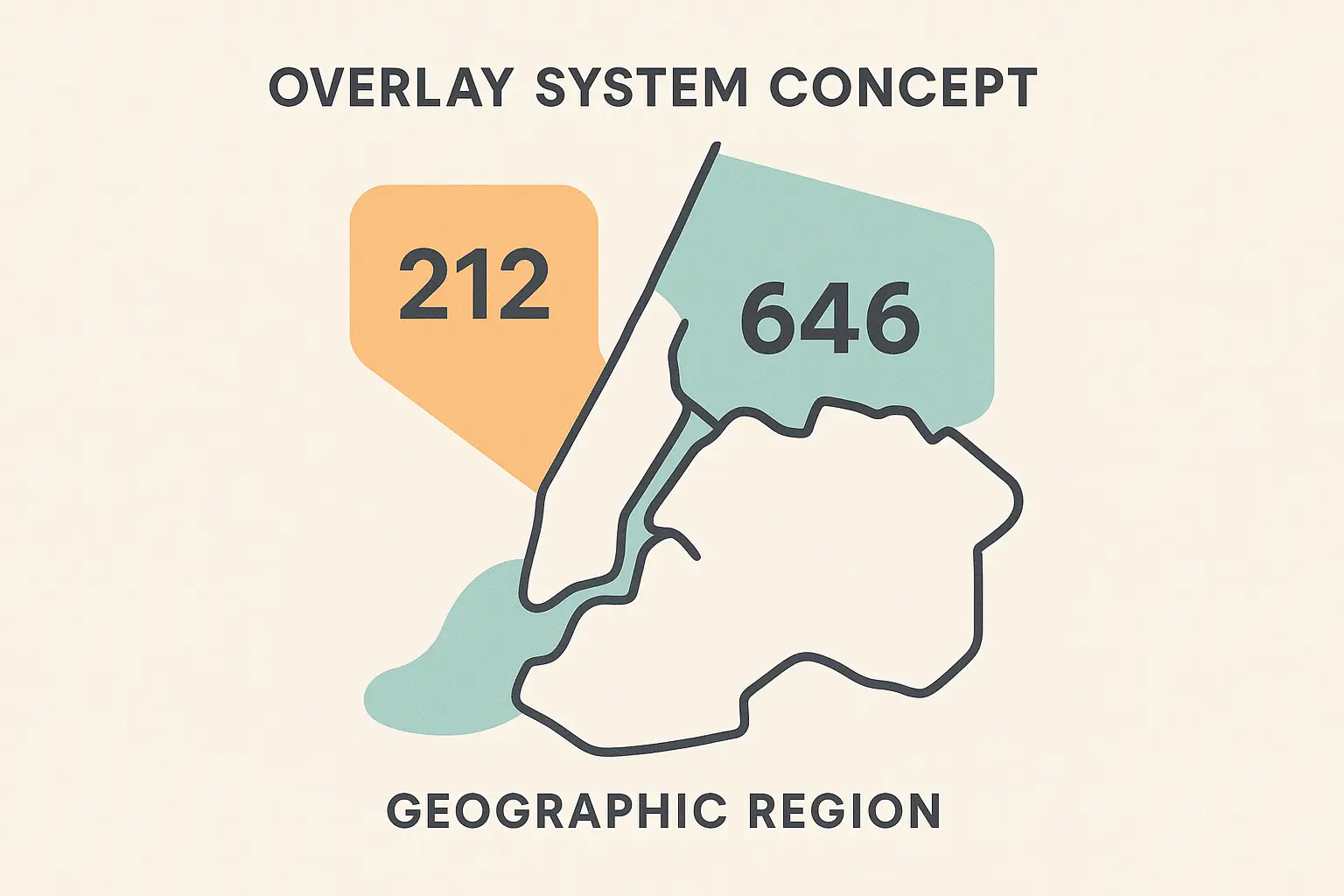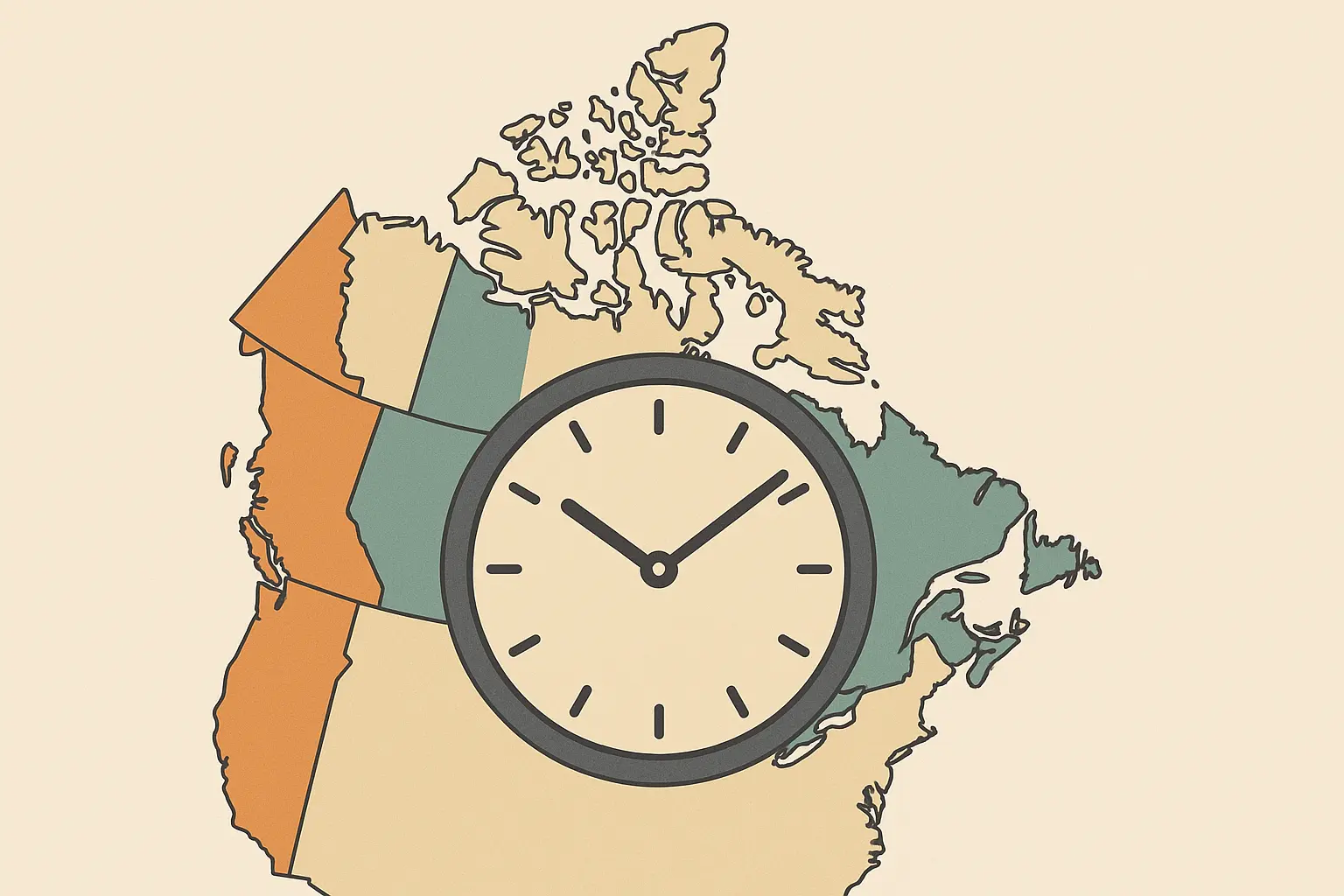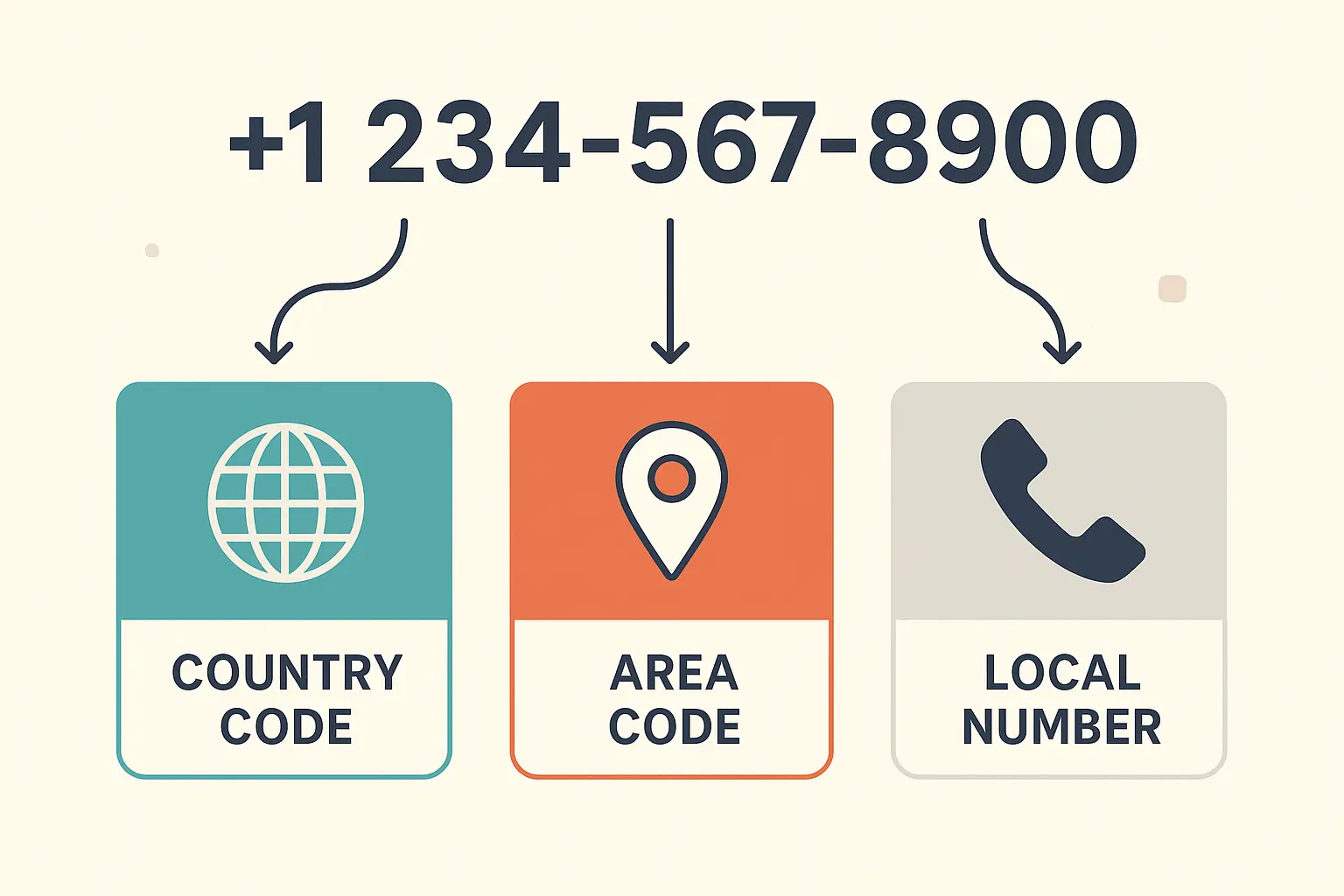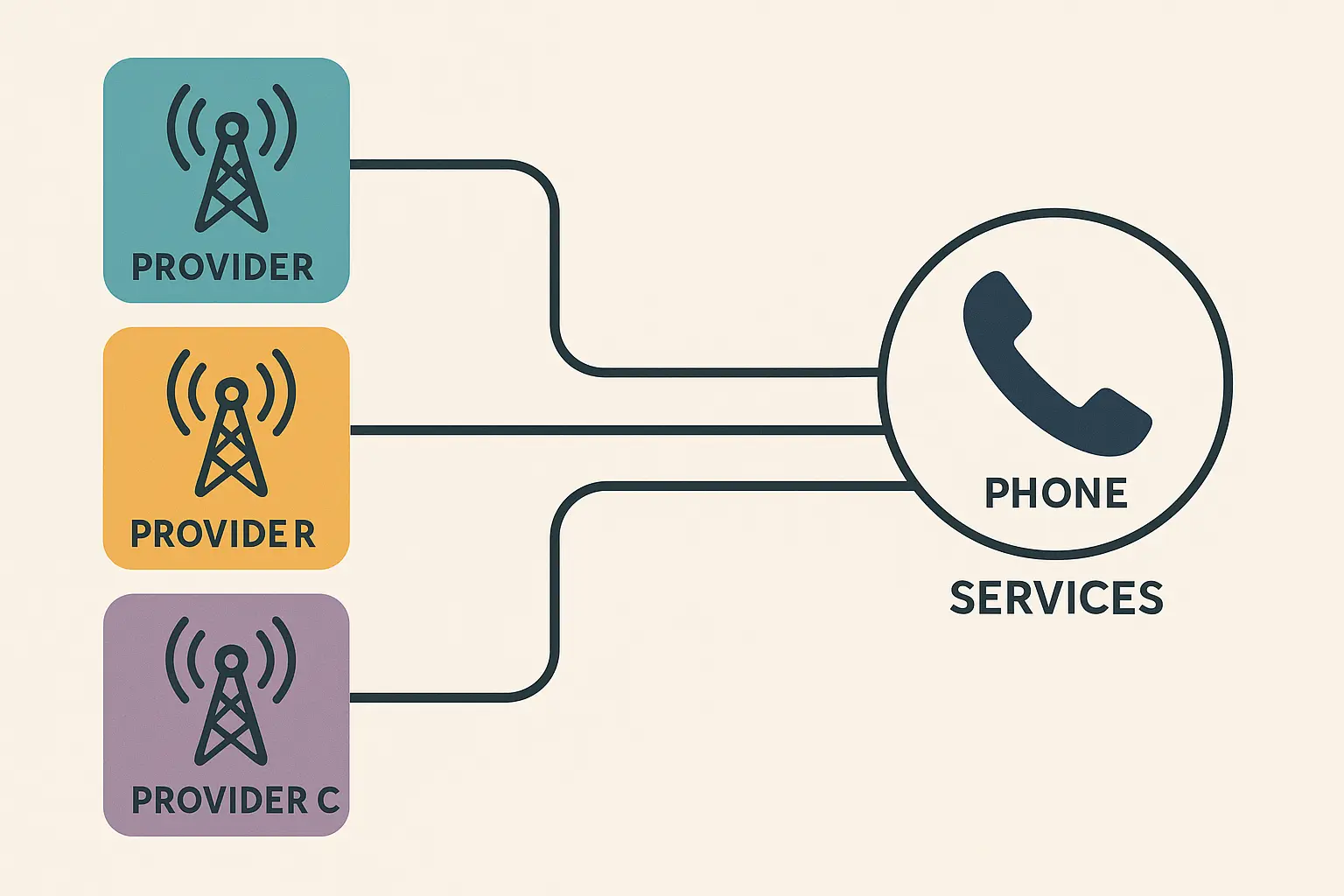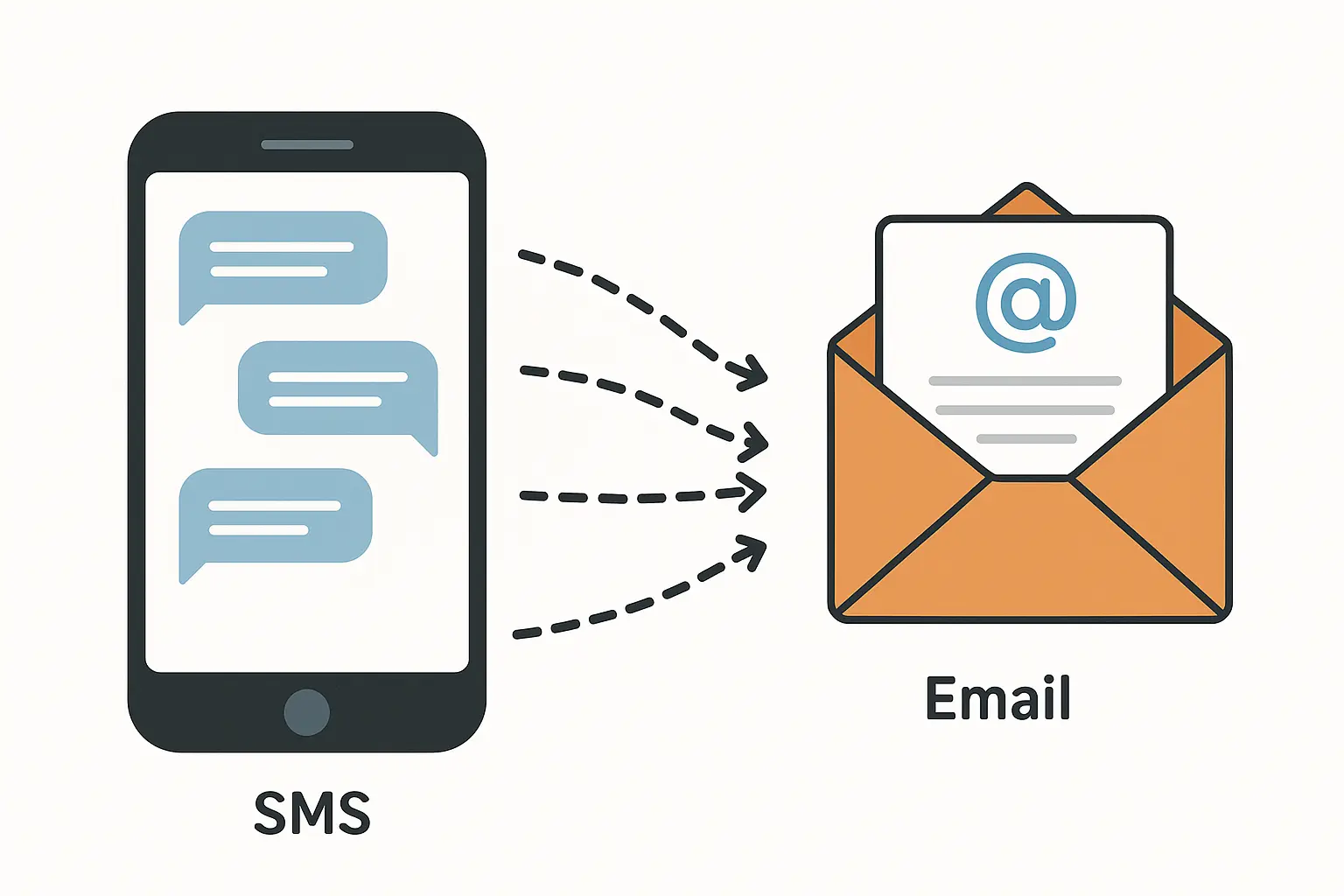Got a 778 number and wondering what you’re dealing with? I’ve been using one for years, and there are some quirks that’ll surprise you. This isn’t just another area code – it’s actually pretty clever how BC set this whole thing up. According to Intelius data, there are over 220,000 active 778 numbers throughout British Columbia, making it a huge part of how we all stay connected.
Whether you’re a business owner trying to look local or someone who just moved to Vancouver and got assigned a 778 number, understanding how this system works can save you real headaches. Trust me on this one.
Table of Contents
Table of Contents
-
Where Your 778 Number Actually Works (And Why It Matters)
-
Pacific Time Reality Check for 778 Users
-
The Technical Side of Your 778 Number
-
Making 778 Work for Your Business
-
How Auto Forward SMS Solves Your 778 Communication Headaches
-
Final Thoughts
TL;DR
-
778 is an overlay covering Vancouver, Surrey, Burnaby, Richmond and the entire Lower Mainland – same area as 604
-
You must dial 10 digits for all calls, even local ones (learned this the hard way)
-
All 778 numbers run on Pacific Time, which affects business calls across the country
-
Both cell phones and landlines can have 778 numbers
-
Businesses struggle with SMS management from 778 numbers, especially for teams
-
New numbers get assigned as either 604 or 778 randomly – it’s not about location
Where Your 778 Number Actually Works (And Why It Matters)
Here’s the thing that confuses everyone: 778 and 604 cover the exact same area. Yep, you read that right. Your neighbor might have a 604 number while you have 778, and you both live on the same street. It’s not about location – it’s about timing.
I remember when this overlay system first rolled out – people were totally lost about why they suddenly had to dial extra digits for local calls. But once you get it, your 778 number actually works across the entire Lower Mainland, which is pretty convenient.
Vancouver and Beyond – The Whole Lower Mainland
Your 778 number works everywhere from downtown Vancouver to Surrey, Burnaby, Richmond, and all the way out to the Fraser Valley. When they ran out of 604 numbers in the late 1990s, they needed more numbers fast. Instead of splitting the region geographically, they just layered 778 right over top of 604.
When I first got my 778 number, I was surprised it worked just as well calling Surrey as it did downtown Vancouver. The coverage zone is massive – from the North Shore mountains down to the US border.
|
Major Cities in 778 Coverage Area |
Population |
Key Industries |
|---|---|---|
|
Vancouver |
662,248 |
Finance, Film, Tourism, Tech |
|
Surrey |
568,322 |
Manufacturing, Agriculture |
|
Burnaby |
249,125 |
Technology, Education |
|
Richmond |
209,937 |
International Trade, Aviation |
|
Coquitlam |
148,625 |
Retail, Services |
|
Langley |
132,603 |
Agriculture, Logistics |
Walking through downtown Vancouver, you’ll notice how many businesses display 778 numbers on their storefronts. The concentration of tech companies, startups, and service businesses means 778 numbers are everywhere. But head out to Surrey or Langley, and you’ll see the same thing – 778 numbers mixed right in with 604 ones.
The North Shore is the same story. I’ve met people living in the same North Van neighborhood with different area codes – it really comes down to when they signed up for service. Some got 604, others got 778, purely based on what was available in the phone company’s system that day.
How 778 Fits Into BC’s Phone System
British Columbia’s phone system has gotten way more complex over the years. We started with just 604 for everything, then 250 for outside the Lower Mainland, and now we’ve got a whole collection. British Columbia’s telecommunications landscape continues to evolve with the new 257 area code being introduced gradually across the province starting May 24, 2025 according to Daily Hive, adding to the existing roster of BC area codes including 236, 250, 604, 672, and 778.
|
BC Area Code |
Year Introduced |
Coverage Area |
Overlay Type |
|---|---|---|---|
|
604 |
1947 |
Lower Mainland |
Original |
|
250 |
1997 |
Rest of BC |
Split from 604 |
|
778 |
2001 |
Lower Mainland |
Overlay 604 |
|
236 |
2013 |
Province-wide |
Overlay 250/778 |
|
672 |
2019 |
Province-wide |
Overlay all |
|
257 |
2025 |
Province-wide |
Overlay all |
The Overlay System Explained (It’s Not What You Think)
Most people think 778 covers a different part of the city than 604, but that’s completely wrong. They cover exactly the same area. It’s like having two different postal systems delivering to the same addresses – both work, you just need to know which one you’re using.
Now here’s where it gets interesting – because both area codes serve the same area, you have to dial 10 digits for every call, even local ones. The phone system can’t tell if 555-1234 belongs to someone with a 604 or 778 number, so you need to specify.
Here’s a perfect example: If you’re calling a local Vancouver business from your 778 number, you must dial 1-604-555-1234 or 1-778-555-1234 depending on their area code, not just 555-1234. I learned this the hard way when I first moved here and kept getting “number not in service” messages.
When you get a new phone number, the phone company assigns either 604 or 778 based on what’s available in their system. I’ve seen entire apartment buildings where some units have 604 numbers and others have 778 – it’s purely random based on when people signed up for service.
Pacific Time Reality Check for 778 Users
All 778 numbers run on Pacific Time, and if you do any business outside BC, this creates some interesting situations. Working with a 778 number means you’re always dealing with Canada’s westernmost time zone, which can actually work in your favor sometimes.
Living on Pacific Time (And What That Actually Means)
Your 778 number follows Pacific Standard Time (UTC-8) and Pacific Daylight Time (UTC-7), same as the rest of BC’s Lower Mainland. This creates some specific timing challenges when you’re dealing with customers or colleagues across the country.
I’ve found that having a 778 number actually works in your favor for some things. When you’re dealing with late-night customer service calls or trying to catch someone after regular business hours on the East Coast, you’ve got extra time to work with.
But here’s what really matters for your day-to-day: 778 numbers operate three hours behind Eastern Time, two hours behind Central Time, and one hour behind Mountain Time. This requires real planning when you’re scheduling meetings or running customer service.
Quick Time Zone Reality Check:
-
Your 9 AM meeting is noon in Toronto
-
East Coast customers are done work when you’re hitting afternoon stride
-
Late West Coast calls can catch East Coast people at dinner
-
Marketing campaigns need multiple launch times
-
Customer service hours affect when people can actually reach you
Business Hours and Customer Expectations
Most businesses with 778 numbers operate 9 AM to 5 PM Pacific Time, which translates to 12 PM to 8 PM for Eastern Canadian customers. This can actually be a competitive advantage if you position it right – you’re available when East Coast businesses are closing up.
Here’s something I’ve noticed: A customer service center operating 9 AM to 5 PM Pacific Time effectively serves Eastern Canadian customers from noon to 8 PM local time, potentially missing morning business hours but extending into evening availability. One Vancouver tech company I know markets this as “extended evening support for Eastern Canada.”
The Technical Side of Your 778 Number
The technical stuff might seem boring, but it actually affects how your 778 number works in real situations. Understanding the structure helps you properly format, dial, and manage your phone communications.
When dealing with international business, understanding how to enter a phone number in international format becomes crucial for 778 number users connecting with global clients.
How Your 778 Number Is Actually Built
Your 778 number follows the standard North American format (+1-778-XXX-XXXX). The 778 area code was assigned for use in British Columbia, Canada, since November 3, 2001, making it one of the newer additions to Canada’s phone system. When you break down your number, each part serves a specific purpose in getting your calls to the right place.
The three digits after 778 represent the exchange code, and the final four digits identify your specific line. Different exchange codes are assigned to various phone companies and sometimes indicate sub-regions, though this isn’t always consistent due to number portability and provider changes.
The final four digits provide 10,000 possible combinations per exchange code, giving substantial number availability within each exchange while keeping everything organized for the phone companies.
Carriers and Service Providers
Multiple phone companies operate in the 778 region, including major Canadian providers like Telus, Rogers, and Bell, alongside smaller regional carriers and internet-based phone services. Each manages their own number allocations and service offerings.
Here’s something that threw me off when I first started doing business in Vancouver – you can’t tell if a 778 number is a cell phone or office line just by looking at it. Unlike some places where area codes distinguish between mobile and landline services, 778 numbers can be assigned to either type without distinction.
Many internet-based phone services offer 778 numbers, allowing businesses to maintain a local BC presence regardless of their physical location. I know several companies that use 778 numbers for their Vancouver operations even though their main offices are in Toronto or Calgary.
Making 778 Work for Your Business
Having worked with dozens of businesses using 778 numbers, I can tell you that local presence makes a real difference in how customers perceive your company. There’s something about that local connection that opens doors, especially in competitive markets.
Building Local Credibility with Your 778 Number
Having a 778 number provides immediate recognition as a Lower Mainland business, which can be crucial for customer trust and local market penetration. Local customers often prefer calling businesses with familiar 778 or 604 numbers, viewing these as more trustworthy than toll-free or out-of-province numbers.
I’ve seen businesses increase their call-back rates by 30% just by switching from a toll-free number to a local 778 number. Using 778 numbers in marketing materials immediately signals local presence, which improves response rates and reduces customer hesitation about service availability or local market understanding.
778 Business Marketing Checklist:
-
Display 778 number prominently on website
-
Include area code in all local advertising
-
Use 778 number on business cards and materials
-
Highlight local presence in marketing copy
-
Set up local voicemail greeting mentioning Vancouver/BC
-
Ensure staff understand local geography and references
The SMS Management Challenge Nobody Talks About
Speaking of complications, here’s a problem that’s driving businesses crazy: SMS message management. Modern businesses using 778 numbers often struggle with text message management, particularly when team members need access to customer communications or when messages need integration into business workflows.
For businesses looking to streamline their communication workflow, learning how to forward text messages to an email address can transform how 778 number SMS communications are managed and archived. With BC will have its sixth area code according to Victoria Buzz, businesses will need even more sophisticated communication management systems to handle multiple area codes and ensure consistent customer service across all BC numbers.
This isolation problem is real. I’ve worked with real estate teams where critical client messages were sitting on one agent’s phone while another agent was showing the property. The lack of integration creates genuine business problems.
Many businesses find that SMS messages to their 778 numbers exist in isolation, making it difficult to track customer communications, maintain proper records, or ensure team members can access important messages when the primary phone isn’t available.
A Vancouver-based real estate agency with a 778 number might miss urgent client inquiries when the primary agent is showing properties, as SMS messages only reach their personal device rather than being accessible to backup team members or integrated into their CRM system.
How Auto Forward SMS Solves Your 778 Communication Headaches
For businesses and individuals managing 778 numbers, Auto Forward SMS addresses the most frustrating communication challenges. Whether you’re running a Vancouver-based business with clients across multiple time zones or need to ensure critical messages reach team members, this service transforms how you handle mobile communications.
New users can quickly establish their communication workflow by following the getting started with AutoForward SMS guide to ensure their 778 area code integrates seamlessly with their business operations.
The platform becomes particularly valuable for 778 number users who need to forward important business SMS to email when working across Pacific Time Zone schedules, ensure SMS messages reach team members who may be traveling or working remotely, archive SMS conversations for compliance or record-keeping purposes, and integrate SMS communications with existing email-based workflows and CRM systems.
For Android users with 778 numbers, the comprehensive Android text forwarding guide provides step-by-step instructions for setting up seamless message forwarding to email addresses.
With Auto Forward SMS, your 778 number evolves beyond just a phone number—it becomes part of a comprehensive communication strategy that ensures no important message gets missed, regardless of device availability or your location.
With 778 being part of two different overlay complexes: 604/778/236/672 and 250/778/236/672, businesses need robust communication management solutions that can handle the complexity of British Columbia’s expanding phone system.
Teams requiring advanced integration can explore forwarding text messages to Slack channels to ensure 778 number communications reach the entire team instantly.
Ready to streamline your 778 number communications? Try Auto Forward SMS today and never miss another important message.
Final Thoughts
Look, 778 numbers aren’t going anywhere. BC’s growing, and we need the phone numbers. Once you understand how it all works, it’s actually pretty convenient. The overlay system might seem weird initially, but it provides the flexibility and number availability that keeps BC’s phone system running smoothly.
From the mandatory 10-digit dialing requirements to the Pacific Time Zone considerations that affect cross-country business relationships, these details matter for anyone serious about maximizing their 778 number’s potential. Just remember to dial all 10 digits, plan for time zone differences, and you’ll be fine.
Most importantly, don’t let SMS management challenges limit your business potential. Whether you’re dealing with remote team coordination or need better integration between your 778 number and existing business systems, solutions exist to bridge these communication gaps and ensure your local presence translates into real business success.
